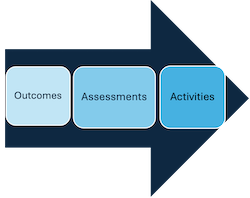Faculty Teaching Institute, backwards design, student learning outcomes
Featured
 This article describes an approach to introducing discussions about equity into the physics classroom, based on the Underrepresentation Curriculum (https://underrep.com).
This article describes an approach to introducing discussions about equity into the physics classroom, based on the Underrepresentation Curriculum (https://underrep.com).
How can I talk about equity in physics classes?
February 6, 2021 This article describes an approach to introducing discussions about equity into the physics classroom, based on the Underrepresentation Curriculum (https://underrep.com).
This article describes an approach to introducing discussions about equity into the physics classroom, based on the Underrepresentation Curriculum (https://underrep.com).
Recent
March 11, 2025
March 11, 2025
What is “backwards design” and how can I use it in my physics classes?
March 11, 2025

Quick tips from the Faculty Teaching Institute about how to implement backwards design. Backwards design is a method for course planning where the instructor starts from the "end goal" or "learning objectives"--what they want their students to know--and then works backwards, designing assessment activities and learning activities that are aligned with the end goal.
How can I make my lectures more effective?
March 11, 2025

Quick tips from the Faculty Teaching Institute about how to create effective and inclusive presentations.



